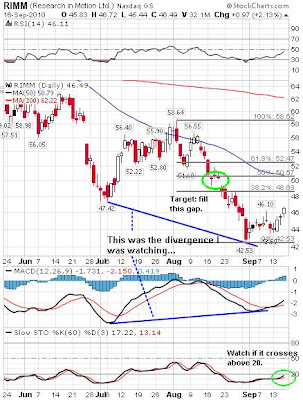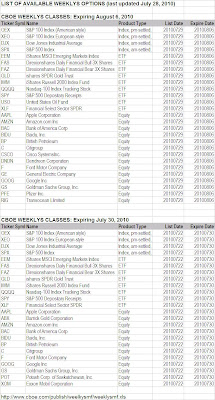Well, Shanghai
does seem to be leading the way to the downside.
In the US, ever since the 'flash crash' of May 6 which was probably caused by High-Frequency bots but the SEC refuses to admit, things are not the same.
Germany's panicky move yesterday to ban the naked shorting of select financial shares and euro bonds via CDS hasn't helped (what were they thinking?) calm the jitters in financial markets, to say the least.
I don't like what I see in Dow Jones Industrial, both in daily chart and weekly chart, and I suspect the long rally from March 09 may be finally over, for now.
First the 9-month daily chart.

The 'flash crash' went right through the supporting trendline from August 09, and the index has been unable to reach that trendline. It hit the line on May 12 and again on May 13, and it headed right back down.
You could argue it is the same setup as February correction, when the index went below the same trendline and failed in its first attempt to retake the line. But two things I don't like this time: 1. Down-volume is so much bigger; 2. Because of this February dip, we now seem to have an expanding wedge (dotted lines in the chart). I learned that an expanding wedge may mark a market top.
Next, the 3-year weekly chart. I like it even less.

The gigantic reverse head and shoulders pattern that marked the March 09 bottom and rapid recovery has pretty much played out, i.e. it seems to have hit the logical target, which is the head height added to the shoulder line. The index also has hit my target, which is 61.8% Fibonacci retracement line. It went slightly above it, and turned back hard on the 'flash crash'.
If the 'flash crash' was simply a technical glitch, the market should have roared back. It did, briefly, after the announcement of $1 trillion euro bailout plan, on a soft volume. Sure enough, it dipped right back. The index is now sitting on 50% retracement.
There are things called fundamentals and macroeconomics, financial policies and sovereign governments, and they have come back into the stock market big time. Even the algo bots seem skiddish.
That aside, look at the technical indicators on this weekly chart. RSI is breaking below 50 for the first time since July 2009. MACD is crossing down. Slow stochastics set at 60 for longer trend is about to break below 80 for the first time since March 2009, an indication that the current bull run may be finally over. Last time it broke below 80 was October 2008, a few weeks after the market top.
On the weekly chart, I don't see a solid support until 8,800 area. 9,400 area may offer some support (38.2% Fib retracement), as there was some consolidation around that area back in August-October 2009.
I'm particularly watching the Slow stochastics (60) on weekly chart.















































